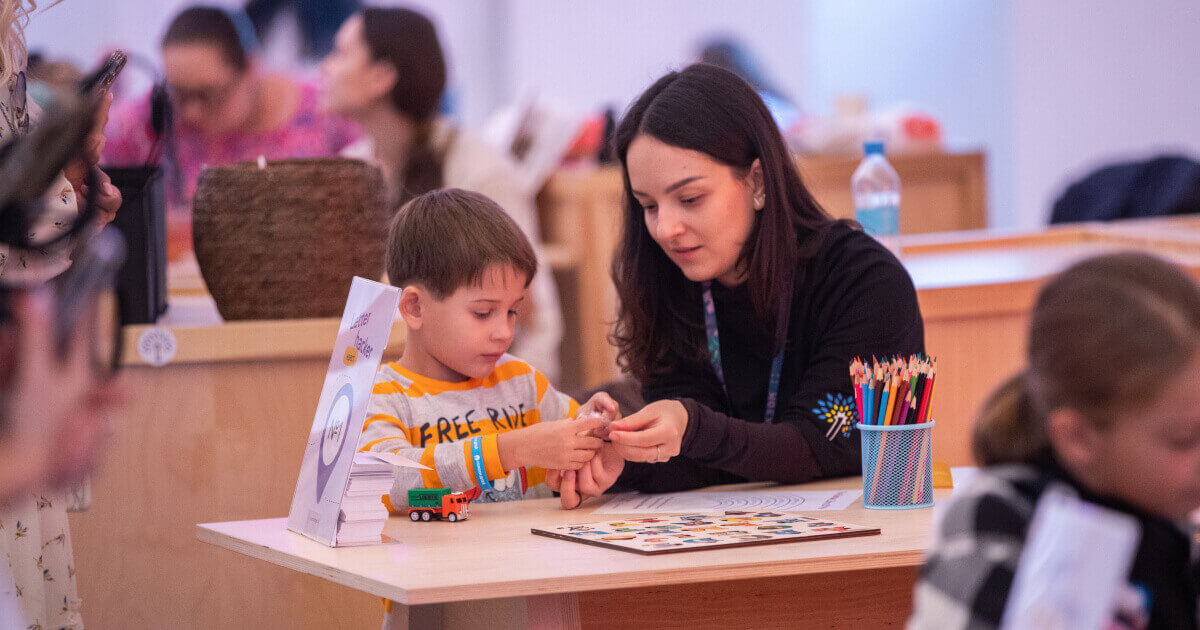Kinesthetic teaching activities for ESL students
- Activities

07.10.2024
When you start to teach the topic "how to give directions in English," it seems simple: learn a few phrases, and you're done.
But in practice, it's quite different.
Students often get confused when it comes to real-life communication.
How can you help them master these skills so that they don’t just memorise phrases but actually use them in real situations?
This is where games and active tasks come in, helping students apply their knowledge in action.
What does it mean to "give directions in English"? It's not just a couple of standard phrases like turn left or go straight.
It’s the ability to explain how to get to a destination in a way that can be understood.
Let’s imagine your student is walking in the city centre and someone approaches them asking for directions — this is where their knowledge of the topic is really put to the test.
It’s not just about knowing individual words, but about being able to explain the route step by step in a coherent way.
That’s why it’s important to practise this in class so that students can immediately apply their knowledge in real situations.
Let’s take a closer look at some of these games and activities.

Say goodbye to boring lessons and hello to engaged students
Join our course"How do I get to...?" is a game where students practise asking questions about how to get to different places and give each other detailed directions.
For this, you’ll need a simple map or you can draw a small town.
One student picks a point on the map and asks, "How do I get to the museum?" while the other responds using directions such as, “Walk straight for two blocks, then turn left at the traffic lights.”
The key to this game is immersion in real communication.
Students begin to use the learned phrases to explain directions effectively.
"Find the treasure" is an exciting interactive game that is perfect for learning directions and spatial orientation in English.
The teacher prepares a treasure map in advance — this could be a layout of the classroom or even the school yard with marked landmarks.
Somewhere on the map, a treasure is hidden.
This is a small mark on the map that students need to reach correctly.
Divide the students into pairs.
One player guides the other, without showing them the map, giving only verbal instructions such as "go straight," "turn left," "turn right," "take three steps forward," "walk past the tree."
The other player must follow these directions exactly to reach the finish line — the location of the hidden treasure.
Teams should compete against each other to see who finds the treasure first.
To make the game more challenging, you can add various obstacles that need to be avoided or overcome using additional English instructions.

What is a Snowball Throwing Technique?
Find out"Simon says go straight" is a dynamic and exciting version of the classic game "Simon says" that helps learners master phrases describing directions in English.
Choose a space for the game — a classroom or a school playground will work perfectly.
All participants stand at the starting line, carefully listening to the commands from the main "Simon" (the leader).
The leader gives commands using directional words: "Simon says go straight," "Simon says turn left," "Simon says take three steps forward."
If the command begins with "Simon says," the participants must follow it.
If the leader simply says "Turn right!" without "Simon says" and someone still follows the command — that student is out of the game.
It's the perfect way for kinaesthetic learners to engage in active learning through movement.
"Draw the directions" is a game that combines creativity with learning English.
Here, participants draw their path by following directions.
The game is perfect for those who enjoy drawing while also wanting to learn how to use phrases related to directions.
Each student gets a sheet of paper and a pencil.
One participant becomes the leader and gives directions in English, such as: "Draw a road that goes straight for five steps, then turn left and draw a lake."
All players draw what they hear without showing their results to others.
Once the drawing is complete, participants reveal their work and compare how closely they followed the instructions.
Use this activity when you want to create an engaging, interactive environment where everyone can relax while practising their English.
VR tools for language learners
"Lost in the city" is an interactive activity that helps players learn directions while immersing them in a role-play scenario where they are travellers searching for their way around an unfamiliar city.
Create a map of the city with important locations such as a museum, park, restaurant, train station, hotel, and more.
The players become tourists who are lost in the city.
One participant or the teacher takes on the role of a local resident who provides directions on how to get to their desired location.
For example, one of the participants might ask: "How do I get to the train station?"
The local resident replies: “Go straight for two blocks, then turn left at the park, and the train station will be on your right.”
The city can also be filled with obstacles such as closed roads or restricted areas, meaning players need to adjust their plans according to the new instructions and ask for directions again to reach their destination.
This activity helps develop communication skills, listening abilities, and quick responses to information in English.

How to deal with unknown words in the text
Find out"Navigate the island" is a game that transports students to a mysterious island.
The goal of the game is to find treasures hidden on the island by following clues and using English phrases to ask for directions.
The teacher creates a map of the island with various locations: caves, jungles, lakes, beaches, and of course, the spot where the treasure is hidden.
The students are divided into pairs, and each pair is given a map.
One participant becomes the guide and gives instructions in English, such as: “Walk through the jungle, then turn left at the waterfall, and you will find the hidden cave.”
The players must mark their routes on their maps according to the instructions and follow each step carefully.
Students can ask the guide questions, such as: "Should I go north or south after crossing the river?"
They continue playing, exploring the island and uncovering new locations until they complete the entire journey and find the spot with the treasure.
If you’re looking to deepen your teaching knowledge and discover more methods, games, and activities for your unforgettable lessons, check out the English teacher training, where you can take TEFL/TESOL courses from experienced teachers and master new teaching approaches.
On our Grade University platform, each course comes with free demo versions, allowing you to ensure the materials are up-to-date and assess their usefulness for your lessons.
The courses are perfect for teachers aiming for professional growth.
In conclusion, using games and activities for explaining directions is a great way to make lessons more practical and engaging.
Students learn to give and understand directions in real-life situations; they no longer just memorise phrases but apply them in real communication.
Each of the suggested games helps with learning English, particularly how to ask for and give directions, as well as developing teamwork and communication skills.
Kateryna Kuchynska
Author
Content Manager | Teacher of General English
Comments
Leave your comment